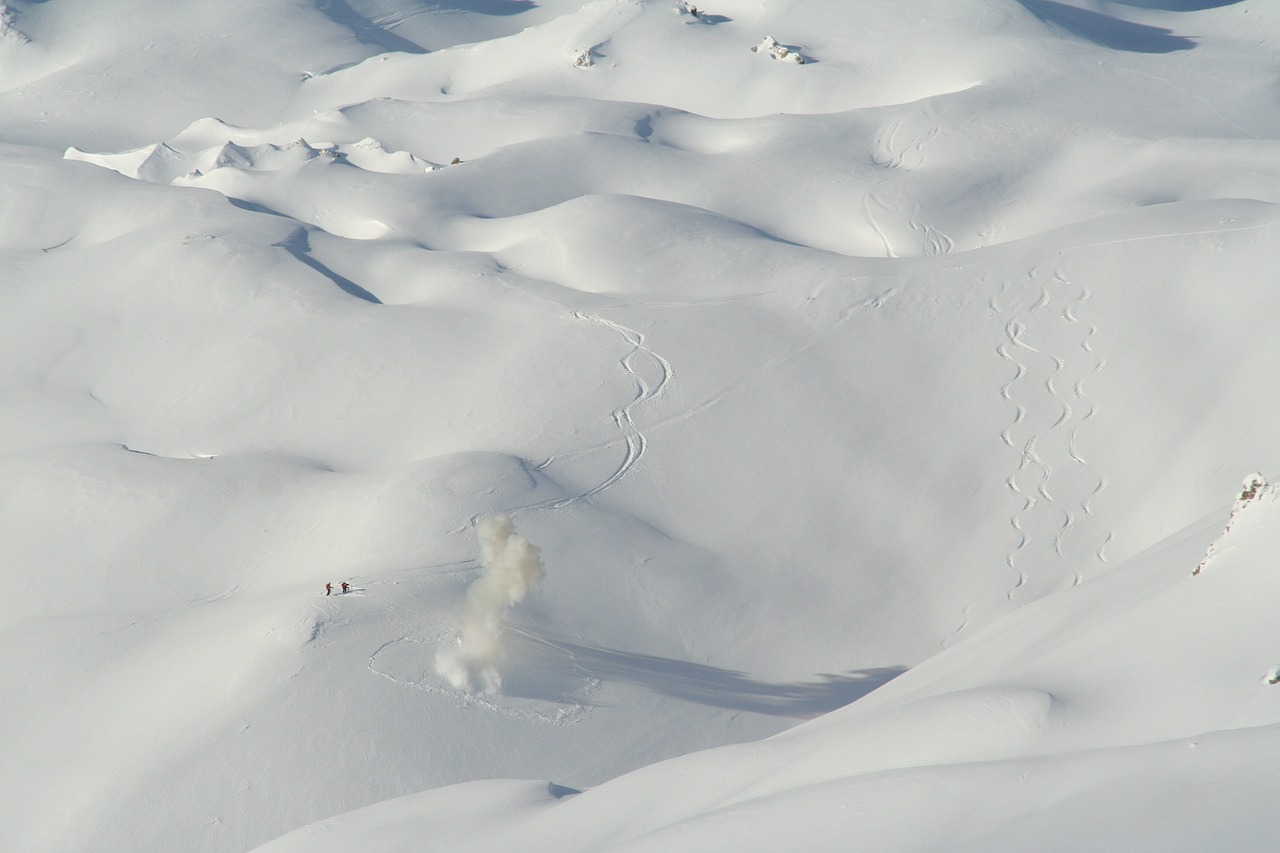Avalanches pour down mountains across the United States every year, destroying everything in their path and killing an average of 28 people.
Avalanches claimed the lives of seven persons in the United States in less than seven weeks, commencing on December 18, 2020, while skiing, snowboarding, or snowmobiling.
In an interview, Simon Trautman, a national avalanche specialist for the USDA Forest Service, shared some tips on making sure your snow days stay that way and boost your chances of surviving if the worst comes.
According to Trautman, the greatest strategy to escape an avalanche is to avoid getting trapped in one in the first place. Trautman works at one of the Forest Service’s 14 avalanche forecasting centers in Bellingham, Washington.
(Photo : Pixabay)
Avalanche threat varies from day to day and sometimes from hour to hour. It is critical to check the most recent information and keep shifting conditions in mind before venturing out.
Go to Avalanche.org and look up the avalanche prediction for your location to evaluate the danger. The online tool, developed in collaboration with the Forest Service and the American Avalanche Association, assists the public in learning about avalanche safety and understanding the avalanche hazard scale, which goes from low to extreme.
Avalanche forecasters on the ground compute the risks every day by observing circumstances such as snowpack behavior, humidity, temperature, wind, and how those components interact with different terrains. Their findings are updated regularly and published on the website.
According to Trautman, emergency services are frequently too far from an avalanche scene, and time is crucial. A person caught under the snow may only have 20 or 30 minutes. So, in the bush, you’re your rescue team.
Also Read: How Do Experts Measure Snow in Mountains?
Avalanche Beacon
Trautman suggests that an avalanche beacon, a probe, and a shovel are three vital pieces of equipment for rescuing oneself, a friend, or even a stranger.
Avalanche beacons are radio transmitters that can pinpoint your location. They are straightforward to use. Before leaving the house, everyone going out for the day puts on a transceiver and turns it on. If an avalanche traps someone in your party, you may use the transceiver to receive their signal and immediately locate them.
Then you may use a probe, a foldable fiberglass stick similar to a tent rod, to find out where a person is buried under the snow and how deep they are buried. Once you’ve discovered your friend, you may use your third tool, a shovel, and quickly release him.
According to Trautman, you have a duty to yourself and the people you go out with. You must have the proper equipment and know how to use it.

(Photo : Photo by JOHANN GRODER/EXPA/AFP via Getty Images)
Beginners and experts can receive appropriate training to learn more about spotting unsafe circumstances and utilizing the equipment. Avalanche.org includes interactive online training for beginners. For anyone interested in learning more, the Avalanche.org website has a variety of educational possibilities, including future seminars and courses.
Even if you check the local forecast, have the proper equipment, and have been taught to survive an avalanche, you may still find yourself staring up at a rapidly moving wall of snow. If you’ve been adequately prepared, your acquired instincts should kick in to help you survive.
Many factors can influence your chances of survival, including how long you’ve been buried in the snow, how deep you’ve been buried, and the injuries you’ve sustained as you’ve been washed down the mountain.
Avoid being trapped
To begin, attempt to move out of the path. Trautman advised doing everything possible to avoid getting trapped in the avalanche. An avalanche is similar to getting caught in a fast-moving flood. The most common advice is to move diagonally to the avalanche or get to the edge, where the slide is slower and you are less likely to be buried deeply.
However, if you find yourself in the line of a major avalanche, there is something you can do. Orient your feet downhill so that most of the impact is felt by your lower body rather than your head. Another approach to protecting your head is to curl up into a tight ball.
And once you’ve gotten some rest, Trautman says you should relax because you know your partners are trained and will come after you.
Avalanches have caught off many people of all ability levels guard.
Many individuals who get trapped in avalanches are out there testing the boundaries. Then some are unaware that they are pushing the edge, he added.
Come prepared
Regardless of one’s preferred snow sport, anyone traveling a snowy range should be adequately educated, prepared, and aware of the hazards. Remember, the greatest method to avoid getting caught in an avalanche in the first place, added Trautman. Finally, we all go out there to have a good time. Have a good time: Come prepared.
Related Article: New Study Revealed: Earth is Losing Ice Faster than Anyone Anticipated
For more environmental news updates, don’t forget to follow Nature World News!
© 2022 NatureWorldNews.com All rights reserved. Do not reproduce without permission.











Comments are closed.